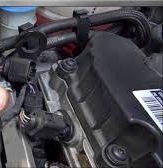
A car’s purge valve is manufactured to last for a long time but not forever. Over time, the valve can go bad and when that time comes, a replacement should be made immediately because the purge valve controls the release of fuel vapor from the fuel tank into the engine’s intake manifold.
If the valve is not replaced immediately it goes bad, it can lead to various issues such as increased emissions, poor gas mileage, and a check engine light. Understanding the root cause of a bad purge valve is important to fixing the problem. Therefore, what causes a purge valve to go bad?
What causes a purge valve to go bad are mechanic wear and tear, old age and high mileage, contamination, vacuum leaks, excessive pressure, incorrect installation, and electrical problems such as poor wire connections and damaged wires, etc.
What Causes a Purge Valve to Go Bad?
Below are what causes a purge valve to go bad:
1. Mechanical Wear and Tear
One of the most common reasons for a purge valve to fail is mechanical wear and tear as a result of the valve constantly opening and closing to allow the flow of fuel vapor from the EVAP system into the engine intake manifold.
Over time, the valve’s internal components, such as the diaphragm or seals, can wear out, resulting in a compromised seal or a valve that doesn’t open and close as it should.
2. Electrical Problems
Purge valves are electronically controlled by the vehicle’s engine control module (ECM). Any electrical problems can disrupt the valve’s functioning.
For example, since the solenoid is responsible for controlling the opening and closing of the valve. if the purge valve solenoid fails to actuate properly, the valve can get stuck in either an open or closed position, causing problems.
Also, if there is a damaged or corroded wire, it can interrupt the flow of electrical signals to the solenoid, preventing it from functioning correctly.
Electrical connections that are poorly connected can cause the purge valve to go bad especially if the connection is between the purge valve and the wiring harness. It can lead to inconsistent performance or a complete failure of the valve.
3. Contamination
The EVAP system handles fuel vapors which can carry contaminants. Dirt, debris, and excessive moisture can enter the purge valve over time leading to clogs or corrosion which can prevent the valve from functioning properly. These contaminants can also damage the valve’s internal components.
4. Vacuum Leaks
Since the purge valve relies on a vacuum source to operate, if there are any leaks in the vacuum lines or hoses connected to the valve, it can affect its performance.
As a driver, a vacuum leak is a problem you may face once in a while. It can be caused by deteriorated or cracked hoses that allow air into the system to disrupt the vacuum pressure.
A punctured hose or one with a tear can also cause a vacuum leak. If they are left unreplaced for a long time, it can cause the purge valve to go bad.
5. Excessive Pressure
If there is excessive pressure within the EVAP system, it can put undue stress on the purge valve, causing it to malfunction. High pressure can result from issues like a clogged canister, a malfunctioning fuel tank pressure sensor, or a blocked vent.
If the charcoal canister is clogged, it can restrict the flow of vapor, leading to a buildup of pressure. The same goes for when the gas tank pressure sensor malfunctions.
Since it is responsible for monitoring the pressure in the fuel tank, it can lead to an inaccurate representation of the pressure and potentially high pressure in the system, causing the purge valve to go bad over time.
Furthermore, the EVAP system is designed to vent excess pressure, but if the vent is blocked, pressure can accumulate within the system and when it can no longer take it anymore, it may cause the valve to go bad.
6. Incorrect Installation
Improper installation can also lead to the premature failure of a purge valve. If the valve is not securely fitted into its housing, or if the wiring connections are not correctly made, it can lead to inconsistent or unreliable performance. A poorly installed valve may not seal correctly, leading to issues with the EVAP system.
7. Environmental Factors
Environmental conditions can play a role in why your purge valve is bad. Extreme temperature fluctuations can affect the integrity of the valve’s materials.
For example, prolonged exposure to high temperatures can cause rubber components to harden and lose flexibility, while extreme cold can make them brittle. Also, exposure to road debris, salt, or moisture can lead to corrosion and damage.
8. Old Age and High Mileage
As a vehicle ages and accumulates more mileage, its various components, including the purge valve, may naturally wear out or deteriorate.
The extent of wear and tear may depend on factors like maintenance, driving conditions, and the quality of materials used in the valve’s construction. Therefore, old age and high mileage can cause the purge valve to go bad.
When a purge valve goes bad, it can lead to problems such as increased emissions, poor fuel efficiency, and a check engine light. Detecting the failure as early as possible and knowing the root cause of the failure can help ensure the efficient operation of the EVAP system and the car in general.
Can Bad Purge Valve Cause Misfire?
Yes, a bad purge valve can indirectly cause an engine misfire but it is not the direct cause of misfire.
Engine misfires are related to issues with the ignition system, fuel system, or air intake system. Therefore, when a purge valve starts to malfunction, it can disrupt the overall engine performance, leading to conditions that make misfires more likely to happen.
For example, since the primary function of the purge valve is to control the release of fuel vapors from the EVAP system into the engine’s intake manifold, if the purge valve is stuck open or not functioning correctly, it can introduce excess air (in the form of fuel vapor) into the intake manifold, creating a lean air-fuel mixture, which may lead to misfires, especially under load or high-demand conditions where the engine requires a precise air-fuel ratio.
Conclusion
A purge valve can go bad due to a combination of mechanical, electrical, and environmental factors such as old age, high mileage, wear and tear, electrical issues, etc. However, understanding the root causes of purge valve failure is important for vehicle owners and mechanics to diagnose and fix the issues immediately.
When a purge valve goes bad, it should be fixed immediately. If it is not something that can be fixed, replacing the purge valve would be a good idea to avoid failing your emission tests because of the high emissions caused by the damaged purge valve.









